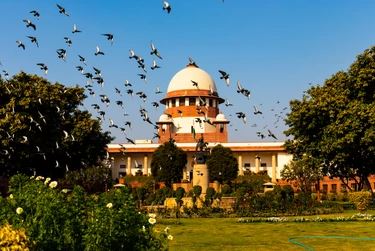Supreme Court Lays down General Principles regarding Order II Rule 2

Introduction
In a recent set of two civil appeals against an impugned judgment of Madras High Court, a two – judge bench of Hon’ble Supreme Court comprising of Justice JB Pardiwala and R Mahadevan allowed the respondent’s second appeal for execution of sale deed by holding that the same was not barred by the provisions of Order II Rule 2 of the Code of Civil Procedure.
Additionally, the court also noted that the extent of the provision stipulates the inclusion of an entire claim arising out of a same cause of action in a single suit and should not be misconstrued to deem that every suit shall contain every claim of every cause of action which the plaintiff may have had against the defendant, which would therefore mean that where cause of action in two suits are completely different, there would be no application for Order 2 Rule 2 to be maintained.
Table of Contents
Brief Background of the Case
The original plaintiff/respondent in the present case had entered into an agreement whereby the defendant had agreed to sell the property for a consideration of Rs. 1,50,000/- and executed an irrevocable power of attorney to enable the plaintiff to complete the formalities pertaining to the suit property.
At a later stage, the defendant had revoked the power of attorney which was issued in the favour of the original plaintiff while issuing another letter for demand of Rs. 1,50,000/- and furnished a notice asking the other party to fulfil their part of the contract by executing the agreement of sale and not to alienate the property further.
The defendant had filed a series of suits seeking specific performance of contract by execution of the sale deed and injunction restraining the sale of the property to any other party in the trial court wherein the appellant moved an interlocutory application under Section 151 of the Code of Civil Procedure and Order VII Rule 11. The Hon’ble High Court allowed restoration of the second suit while maintaining the point that the same was not hit by Order 2 Rule 2.
Court’s Analysis
While adjudicating the present case, the primary issue which arose before the court was whether the legal provisions enumerated under Order II Rule II of the Code of Civil Procedure bar the institution of second suit and warrant the rejection of the plaint in the present case.
While discussing the general principles underlying the Order II Rule II of the Code of Civil Procedure, the court noted that the sole purpose of Order II of the Civil Procedure is to prevent any multiplicity of suits and stipulating the inclusion of a whole claim arising out of a single cause of action in a single suit itself. However, when the plaintiff has two separate cause of action arising out of a single claim against the defendant or there are two separate suits, the provisions of Order II Rule II do not hold any relevance. Moreover, the bar of Order II Rule II may only be imposed when the cause of action is the same.
In order to construe the term Cause of Action, the court also referred to the landmark judgment of Mohammad Khalil Khan V. Mahbub Ali Mian wherein the court construed the term cause of action to be every act necessary for the court to prove his right to the judgment of the court. It does not need to be every single piece of evidence needed to prove every fact but gives an occasion for and forms a ground for filing the suit. However, it is essential to form the suit in a broad way possible in order to claim each and every relief since it would not be possible to claim such relief afterwards.
While considering the stage at which such application under Order II Rule 2 Should be applied, the court noted that the provision does not impose any restriction upon the applicability of the principles laid under the rules and as such there is no clear requirement that the first suit should be either disposed of or pending in order to make a plea as regards to the second or subsequent suit. With the object of the law being to avoid multiplicity of suits or pending litigations, if it is held that the first suit is disposed off, the parties would still be able to file multiple suits with the excuse that the first suit is pending.
Way Forward for the new litigations
The present judgment has established the ground rules pertaining to applicability of the bar under Order II of the Code of Civil Procedure and has made an active attempt to reduce the pendency of fresh civil cases filed under the garb of obtaining protection under Section 151 of the Code. While holding that it is immaterial at which stage the first suit is, what needs to be considered is whether the cause of action in both the suits carries the same pith and substance and whether the plaintiff is agitating the same demand in the second suit which he could have taken up in the first suit.
The court in the present case has not barred the parties from agitating their set of reliefs in a manner as broad as possible but has only directed the parties to mention all the reliefs sought after in a single suit since the second suit demanding reliefs pertaining to the same cause of action which could have been obtained in the first suit itself would not be permissible under law.
King Stubb & Kasiva,
Advocates & Attorneys
New Delhi | Mumbai | Bangalore | Chennai | Hyderabad | Mangalore | Pune | Kochi
Tel: +91 11 41032969 | Email: info@ksandk.com
By entering the email address you agree to our Privacy Policy.